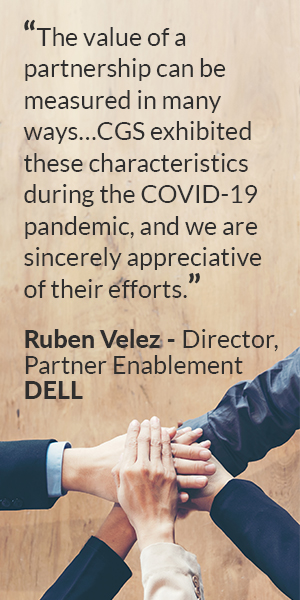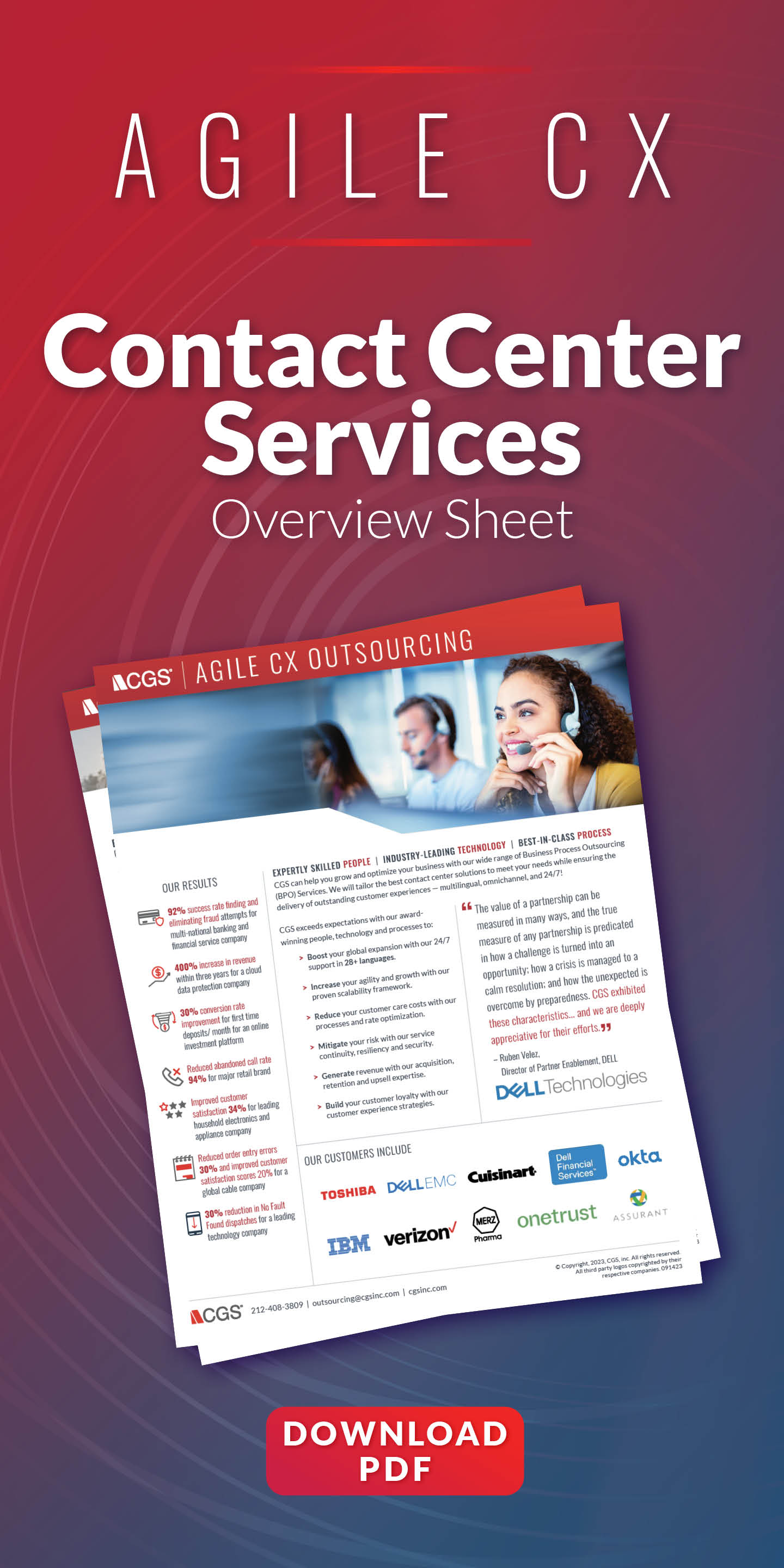9 Tips for Building a Business Case for Outsourcing

EXPERT ADVICE FOR SUCCESS
Business process outsourcing (BPO) is an investment, and companies need to be sure that these services align with business goals. Outsourcing key business functions is a great way to save costs and free up internal resources for growth activities while still providing excellent customer service, technical support or back-office administration.
An outstanding BPO experience begins with an outstanding business case. Preparing a clear business case and set of goals is essential to ensuring that both you and your outsourcing partner meet or exceed those goals and bring back measurable ROI to your business. Following these tips can help:
1. DO YOUR RESEARCH
It helps to have some background information on the industry to reference in your business case. This data can include reasons why companies outsource, reasons why they may not and the benefits they seek. Each year we do research around these topics to find trends behind the terms and technology companies seek in outsourcing. Obviously, the pandemic has altered strategies and business needs for many industries. So, you will want to factor in the current climate in which you operate, as well as the overall business strategy of your organization, into the plan you create.
In our most recent survey, business and functional leaders weighed in on their organizations’ approaches to outsourcing, including the goals for their contact centers, whether their outsourcing plans are changing and what may be keeping them from outsourcing.
2. GO FOR THE GOALS
Understanding, relaying and applying your business’s goals for customer or tech support or any contact center service is essential in building your business case. In our survey, the top three goals were improving customer experience (41 percent), reduce costs/getting more predictable costs (41 percent) and improving work-from-home capabilities and security (37 percent). Even with a global disruption, these goals varied little from past years.
If these goals resonate with your organization, it’s a good idea to roll up any goals in the outsourcing business case to address them.
3. TO BPO OR NOT TO BPO?
Each year we survey business leaders on their outsourcing decisions. In this year’s results, 25 percent of survey participants planned to expand their outsourcing or to outsource for the first time, slightly down from pre-pandemic levels.
A couple of trigger events often lead to a company’s decision to outsource. One is that the company is growing or they’re expecting growth, and they cannot continue to maintain internal support. Or perhaps their existing outsourcing partner is too small and doesn’t have global capabilities around language, networking, infrastructure or telephony.
Another key trigger is a change in leadership. Perhaps a new executive who has outsourced successfully before comes in and has plans to reduce cost and increase efficiencies.
On the other hand, 39 percent of respondents to our survey don’t currently outsource and have no plans to this year, which is a significant increase compared to pre-pandemic responses.
What drivers are motivating companies’ reluctance to outsource? Nearly 25 percent were bringing services back in-house to avoid laying off employees. Performance issues were another driver. As we entered 2021, 21 percent of leaders felt their outsourced services failed to meet expectations. This concern was amplified due to the negative effects of COVID-19. A third driver: 20 percent of respondents reported they were not confident in the data privacy and cybersecurity of outsourcing partners.
In preparing your business case, you want to address and alleviate any concerns that C-suite executives have with outsourcing business functions. Naturally, as you begin to court BPO partners down the road, these concerns should be fully addressed and covered.
4. BENEFITS AND ROI
Any solid business case will answer the common questions: “how much does it cost” and “what is the return on investment?” So, what are the key benefits of outsourcing technical support or customer care? It comes down to two scenarios: those currently outsourcing and those who are considering outsourcing.
For companies currently outsourcing, they are either not getting the benefits they thought they would receive, or they are seeking additional benefits. So, perhaps you would prepare a business case to find a new outsourcing partner. In that case, you want to address the issues you are experiencing and ensure you build in KPIs and SLAs that meet your needs with the next provider.
If you are satisfied with your outsourcing but want to increase benefits or grow the business, look for partners that offer flexibility and scalability to expand business globally. The best providers will offer seamless support across borders, languages and cultures.
For organizations not currently outsourcing, most of the time they have internal resources that are providing support today. The benefit they seek is primarily cost saving, reducing labor costs by outsourcing a business need that is not in their wheelhouse. They also may want to focus internal resources on core responsibilities or business expansion.
Another key benefit of outsourcing is gaining a consulting partner that can help digitally transform your organization. BPO partners should offer the latest technology, such as AI, expansive knowledgebases, automation and responsive chatbots that streamline self-service and offer seamless integration with human agents. One recent technology, augmented reality or mixed reality, offers immersive, hands-on virtual experiences that connect and empower staff and customers for better, faster support. And it works without any extra equipment.
Finally, another key benefit is increasing customer satisfaction, whether the customers are internal end users or external consumers. Focusing on core competencies and outsourcing support or service to experts allows organizations to operate in an integrated way that provides scalability and flexibility on a global scale.
5. KNOW YOUR AUDIENCE
Once you are ready to evaluate vendors, one method is to go through a traditional RFP process where several vendors will address specific questions you’ve outlined with key stakeholders. It’s important that stakeholders are engaged and involved at the onset. Therefore, if it’s a service desk outsourcing project, the CFO must involve the CIO and IT management. Involving stakeholders has a twofold purpose:
- It broaches the topic of outsourcing and any sensitivity it carries internally
- People with the crucial information for the initiative can help build the technical side of the business case
Different objectives will take center stage for different stakeholders. Your CIO may care most about infrastructure, business continuity, privacy and data security best practices. Your CFO may want to focus on the cost benefits and what efficiencies will be realized over a specified time. Your chief customer officer may care more about the culture, recruiting and training processes, and quality control methods that ensure consistent high-quality services. Make sure you are anticipating both the needs of these individuals, as well as their objections.
A more partner-centric approach may be to forgo an RFP and seek a consultative partnership. Start by selecting 2–3 key potential partners based on publicly available information, such as company size, locations, scalability, key services and experience. Then, rather than dictating what you want, go with a competitive co-creation process. Let the potential partners dig deep into your business needs and propose solutions to solve your problems. This could lead to true innovation and multiyear improvements. And it’s a great way to test which partner is really listening and how customized their approach is to your company’s needs.
6. GET BUY-IN
An outsourcing initiative is an investment, sometimes a large one. Anytime these are made, the buy-in must be achieved from the top down and the bottom up. A successful plan will be targeted to the CEO, COO, CIO—all the C-suite at your company. All stakeholders, and those who control the purse strings, should buy into the project. As stated earlier, keep that audience in mind.
Again, use your potential partners here. They should be able to provide case studies, data, and proof points on the results you can expect to achieve. They should also be able to lay out exactly how the transition will work to avoid any roadblocks and pitfalls. They should have the plan all worked out on who, what, when, where and how the work will get done to assuage any fears. And if your stakeholders still have cold feet, a pilot project with clear goals and expectations could be the way to get your feet wet with a lower risk.
7. EXPECT CHALLENGES
Establish a clear timeline but expect challenges in your business case. Do you want to do a phased rollout or outsourcing transformation, or a Big Bang rollover all at once? Either way, it’s good to remain flexible. Depending on the size of your organization and initiative, it could involve legal and regulatory changes in multiple geographies and across multiple governing bodies. So, as with any initiative, your consultant and partner should have experience working across the Americas, Europe, Asia-Pacific, Africa—wherever you do business.
Also make sure the partner has a solid governance plan and regular cadence of meetings planned to tackle not only day-to-day (daily/weekly operations meetings) business challenges but also to keep focus on the bigger picture (quarterly and/or annual business reviews) so you don’t lose sight of the larger transformational goals. Flexibility and agility will be important in weathering business disruptions from major events (pandemics and hurricanes) to challenges (product recalls and PR disasters). As your frontline, your contact center partner will be with you through the best and worst of times.
Another challenge might be internal emotions or egos around the initiative. Gathering the key stakeholders, the movers and shakers, is important to establish the plan from the get-go, agree on a direction and follow it.
8. MANAGE THE TRANSITION
The relative ease or difficult of your organization’s transition to an outsourcing model is predicated on how well you plan. That’s business and transition planning. Cover all the bases and have the right people with the right information in the right place at the right time. Sounds easy, right?
A successful transition has three overall qualities:
- Communication: There’s no such thing as too much communication before, during, and even after a transition. You and your partner are always evolving. Be clear and concise; communicate what is happening without overstating. Share a clear, concise timeline. And communicate good and bad news. If you miss a milestone, communicate about what happens next. You want to avoid a domino effect. Communicate early and often.
- Cooperation: You must establish a true partnership between client, customer and vendor. Your outsourcing partner should become a true extension of your employees and represent your brand accurately and effectively. The partners should be open in sharing intellectual capital. You need data and details to ensure that goals are met, and lessons are learned when they are not.
- Continuity: Make an upfront commitment on who is engaged and in charge of this transition. If you have a revolving door of technology or project managers, the transition could suffer. Open communication, both internally and with customers, is another part of continuity. The right BPO partner will help ease and overcome potential challenges.
9. PICK THE RIGHT PARTNER
Outsourcing is a huge step. It’s very important to take your time and select the right partner. You can avoid the most common contact or call center issues by choosing well and establishing a long-term partnership that is a win-win for all involved.
What are the traits of a good outsourcing partner? Here are just a few:
- They focus on customer satisfaction and quality support
- They create and maintain strategic partnerships
- They hire the best agents and use top technologies to train them on the requisite hard skills and soft skills
- They address top business challenges, including data and cybersecurity
- They embrace an omnichannel customer experience
Wherever you are on your outsourcing journey, you may have questions or need more guidance about next steps. Contact one of our specialists for more information on how outsourcing essential business functions can save you money while increasing the quality and consistency of your support.



